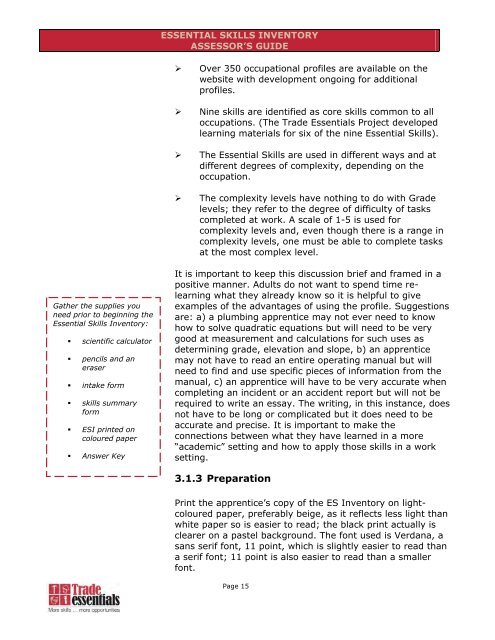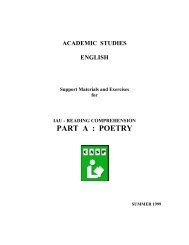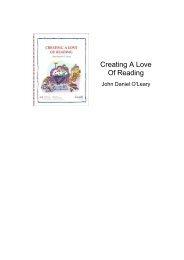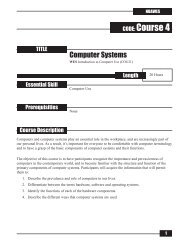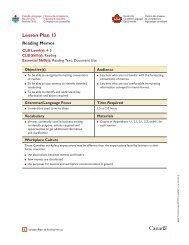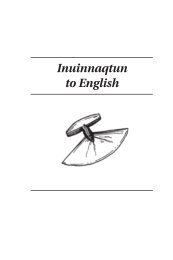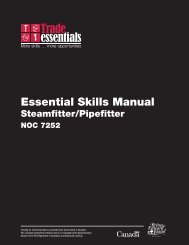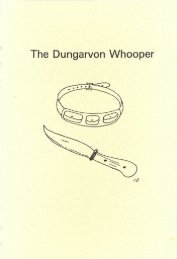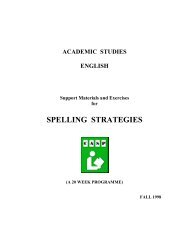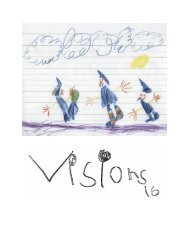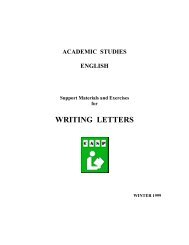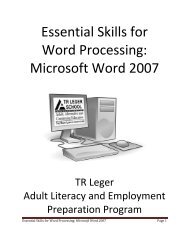Essential Skills Manual - Automotive Service Technician
Essential Skills Manual - Automotive Service Technician
Essential Skills Manual - Automotive Service Technician
Create successful ePaper yourself
Turn your PDF publications into a flip-book with our unique Google optimized e-Paper software.
Gather the supplies you<br />
need prior to beginning the<br />
<strong>Essential</strong> <strong>Skills</strong> Inventory:<br />
scientific calculator<br />
pencils and an<br />
eraser<br />
intake form<br />
skills summary<br />
form<br />
ESI printed on<br />
coloured paper<br />
Answer Key<br />
ESSENTIAL SKILLS INVENTORY<br />
ASSESSOR’S GUIDE<br />
Over 350 occupational profiles are available on the<br />
website with development ongoing for additional<br />
profiles.<br />
Nine skills are identified as core skills common to all<br />
occupations. (The Trade <strong>Essential</strong>s Project developed<br />
learning materials for six of the nine <strong>Essential</strong> <strong>Skills</strong>).<br />
The <strong>Essential</strong> <strong>Skills</strong> are used in different ways and at<br />
different degrees of complexity, depending on the<br />
occupation.<br />
The complexity levels have nothing to do with Grade<br />
levels; they refer to the degree of difficulty of tasks<br />
completed at work. A scale of 1-5 is used for<br />
complexity levels and, even though there is a range in<br />
complexity levels, one must be able to complete tasks<br />
at the most complex level.<br />
It is important to keep this discussion brief and framed in a<br />
positive manner. Adults do not want to spend time relearning<br />
what they already know so it is helpful to give<br />
examples of the advantages of using the profile. Suggestions<br />
are: a) a plumbing apprentice may not ever need to know<br />
how to solve quadratic equations but will need to be very<br />
good at measurement and calculations for such uses as<br />
determining grade, elevation and slope, b) an apprentice<br />
may not have to read an entire operating manual but will<br />
need to find and use specific pieces of information from the<br />
manual, c) an apprentice will have to be very accurate when<br />
completing an incident or an accident report but will not be<br />
required to write an essay. The writing, in this instance, does<br />
not have to be long or complicated but it does need to be<br />
accurate and precise. It is important to make the<br />
connections between what they have learned in a more<br />
“academic” setting and how to apply those skills in a work<br />
setting.<br />
3.1.3 Preparation<br />
Print the apprentice’s copy of the ES Inventory on lightcoloured<br />
paper, preferably beige, as it reflects less light than<br />
white paper so is easier to read; the black print actually is<br />
clearer on a pastel background. The font used is Verdana, a<br />
sans serif font, 11 point, which is slightly easier to read than<br />
a serif font; 11 point is also easier to read than a smaller<br />
font.<br />
Page 15


